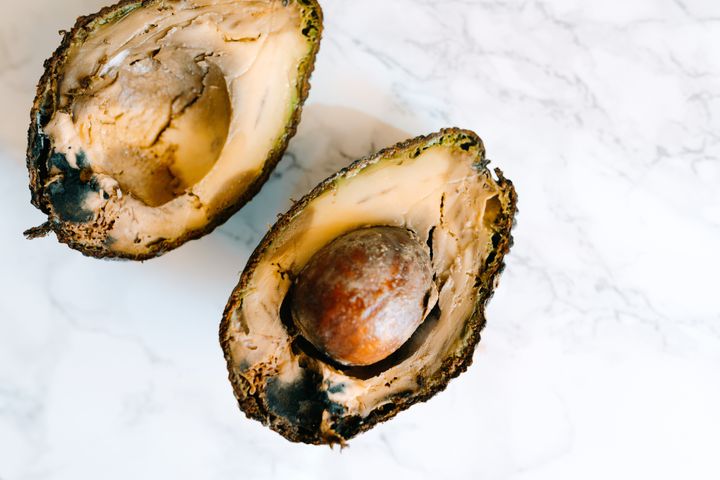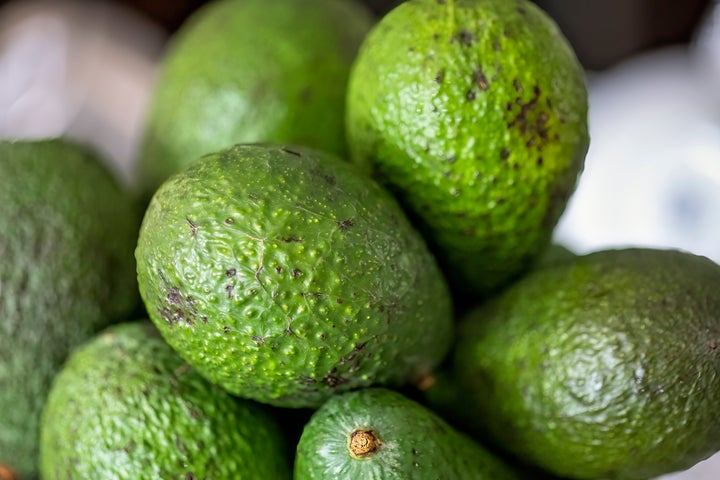
Avocados might give apple pie a run for its money as the most American of foods. As a country, we eat the lion’s share of the planet’s creamy green fruit, accounting for 40% of the world’s imports, or about 3 billion pounds annually. And no, it’s not all going to millennials for their toast. In fact, a whopping 20% of the year’s avocado sales take place during a certain major sporting event in February, because, like most things, halftime is just better with guacamole.
For the most part, avocados love us back. According to the U.S. Department of Agriculture, they’re a good source of several nutrients most Americans don’t get enough of, including fibre, potassium and monounsaturated fats, the heart-healthy kind. Avocados are one of the rare plant-based sources of such fats.
But if you’ve ever sliced into an avocado to find mould, dark spots or streaks, or weirdly stringy flesh, you may have wondered if love was enough. As it turns out, avocados are a surprisingly delicate fruit, and not well suited to being shipped thousands of miles.
“Avocados are unique fruits in that they do not ripen on the tree,” explained Darryl Holliday, a food scientist, chef and executive director of the Arkansas Food Innovation Center. “You have to cut them down before they ripen, and there are so many seemingly minor things that can affect that process.” Ripening too quickly, being held at the wrong temperature (too hot or too cold), cracked skins, bruising from even a small fall or a too-tight squeeze... all these things can lead to a less-than-perfect avocado experience.
The good news is, in most cases, the damage is purely aesthetic. Still, to be safe, we asked Holliday and several other experts about the various ways avocados can go bad, and what to do when that happens.
If an avocado has brownish-black streaks and spots on its flesh...
This is one of the most common issues with avocados, and it’s known as vascular browning.
It’s easily recognised by the distinct pattern the small flecks form, usually in lines or circles around the seed. As you know if you’ve ever left out a cut avocado for a length of time, the fruit will start to brown in an hour or two — this is due to the presence of phenolic compounds, which react with oxygen.
What you may not have realised is that although avocado flesh appears uniform, it conceals a vascular system that acts similarly to our own: a network of tubes a few millimetres below the surface that carry nutrients and water to the fruit as it grows, explained Mary Lu Arpaia, professor of extension for subtropical horticulture at the University of California, Riverside.
When any part of those tubes is exposed to oxygen, the entire vasculature starts to brown rapidly. This is most commonly caused by chilling injuries, or storing avocados at a too-low temperature, but it can also be a sign of stem rot if it occurs near the top of the fruit where it was cut from the tree. Either way, the spots aren’t harmful.
“Avocados with spots due to vascular browning or oxidation are safe to eat,” said Janilyn Hutchings, a certified professional in food safety and a food scientist for StateFoodSafety. “The brown spots aren’t as flavourful, so you may want to cut them away, but they won’t hurt you.”
If an avocado has stringy flesh...
If you’ve ever gotten the ick from a fibrous avocado, you’re not alone. Once again, vascular tissue and storage temperature are to blame. When avocados are held at too high a temperature after or during ripening, or when they’re ripened and chilled too quickly, strands of cellulose material that didn’t fully ripen may be visible, Holliday explained.
The vascular pathways are usually the first affected, which gives the avocado flesh a stringy consistency. While eating it won’t make you sick, it also won’t be very enjoyable. Your best bet for avoiding this is to buy a still-hard avocado and ripen it yourself by placing it in a brown paper bag at room temperature for a day or two, Holliday said. (Adding a banana to the bag will speed up the process if you’re in a hurry.)
If you detect what feels like an ‘air pocket’ when you squeeze an avocado...
When an avocado is bruised, it reacts by swelling up temporarily. Once the swelling goes down, it leaves a small space between the avocado flesh and the skin, Holliday said. This air pocket can be susceptible to mould, which is what you’re likely to find when you cut into an avocado with one of these defects.
Avocados can be bruised by rough handling, dropping, or abrasions or cracks to their skin. It can even happen from a too-rough squeeze, so be gentle when handling your avocados and avoid any if you feel the telltale space.
“If you notice any mould, unpleasant smells, shrivelling, black and sunken lesions, or watery spots, those are signs that decay has set in,” Hutchings said. Don’t attempt to salvage these fruits ― just throw them away.
If an avocado has small, hard lumps in its flesh...
If an avocado is damaged (usually by insects) while it’s still growing, it may react with a defence mechanism and develop a small, hard, protective lump known as a stone, Holliday said. There could be one or several, and usually they occur near the skin; hard spots closer to the pit are generally just unripe fruit.
Avocado stones are safe to eat but unpleasant texture-wise, so it’s best to just remove them and eat around them.

If an avocado has yellow or brownish spots on its skin...
A lot of the external damage to avocados tends to be harmless. Avocados are pretty sensitive to temperature, and storing them in very cold conditions (32 to 36 degrees Fahrenheit for more than seven days) can lead to a number of chilling injuries, Hutchings said.
In addition to vascular browning, avocados sometimes develop pitted skins. Another common problem is known as lenticel damage, in which damage to the pores of the skin present as mottled black spots that are hard to detect once an avocado ripens and its skin darkens. This sometimes increases the risk of rot, but is often purely cosmetic.
You may want to avoid fruit with brown patches, however. These spots, which are described as feeling “corky,” can be caused by bug damage or sunburn, and often affect the flesh inside, according to the Hass Avocado Board.
If your avocado has turned brown...
Avocado flesh will naturally turn brown or black when it oxidises, i.e. when it’s exposed to air. This frequently happens after you slice an avocado and don’t use it all. So, is that blackened half-a-’cado destined for the garbage?
The answer, surprisingly, is no. The black part, while unappetising, won’t make you sick, Holliday said. And initially, it will only affect the thin layer of avocado flesh that’s been exposed to air, so you can either cut the black part away with a paring knife or mash it up with the greener flesh below so it’s barely noticeable.
To prevent browning, store avocados properly by wrapping them in airtight plastic wrap, or cover them with a thin layer of citrus juice, which prevents oxidation. You can keep guacamole from going brown by adding the lime juice last so it rests on top of the other ingredients, and mixing it in just before serving.
How to look for a good avocado
When looking for an avocado, choose those that are green-skinned without visible blemishes or bruises. If you don’t have time to ripen them yourself, choose a dark-skinned fruit that yields under slight pressure — you shouldn’t have to squeeze very hard.
Some kinds of damage, including vascular browning, occur long before the avocado gets to the store shelf, and can be difficult to avoid. But if you do end up with a spotty fruit, at least you know what caused it, and whether it’s still safe to eat. When life hands you avocados, make guacamole.